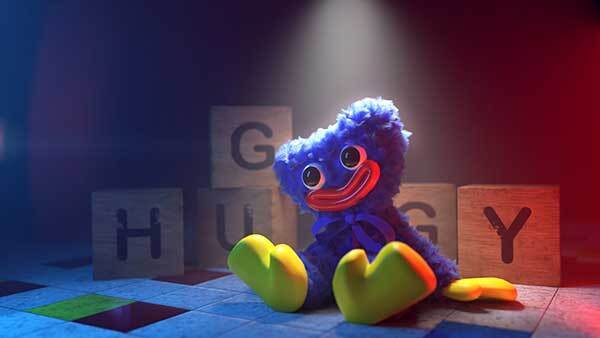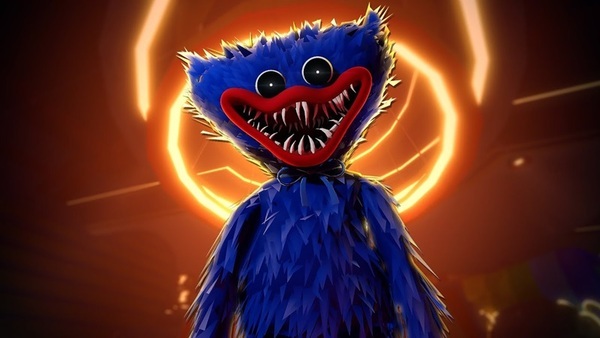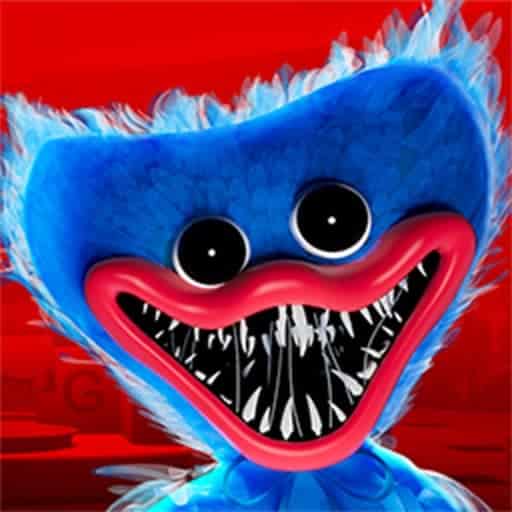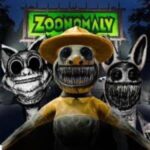Introduction
Poppy Playtime, developed by MOB Games, has quickly gained widespread popularity in the gaming community, especially among fans of horror and psychological thrillers. The game takes players into a seemingly innocent setting—an abandoned toy factory—only for them to discover that things are far from innocent. As players explore the eerie facility, they are pursued by grotesque and sentient toys, with the most infamous being Huggy Wuggy, a giant, blue, plush-like monster. While the game is appreciated for its atmospheric tension and jump scares, it also delves into deeper, more unsettling themes that deserve scrutiny. In this article, we will explore the disturbing juxtaposition between the innocent and the horrific in Poppy Playtime, and the ethical issues it raises about its content, character design, and narrative.
The Toy Factory Setting: Innocence Corrupted
A Familiar Environment Turned Nightmarish
At its core, Poppy Playtime is set within a toy factory, an environment that is typically associated with joy, creativity, and innocence. Toys are a universal symbol of childhood, evoking nostalgia and warmth. However, in Poppy Playtime, this seemingly innocent setting becomes the stage for a terrifying journey where the very toys meant to comfort children are turned into horrific killers. This inversion of the toy factory’s purpose is both disorienting and unnerving. What was once a place of manufacturing joy now serves as a factory of terror.
The Factory as a Metaphor for Lost Innocence
The choice of a toy factory as the primary setting isn’t merely a background choice—it serves as a metaphor for the loss of childhood innocence. Toys, once symbols of comfort and care, are twisted into dangerous creatures. The game suggests that the transition from the innocence of childhood to the harsh reality of the adult world is not only inevitable but violent. In this way, the factory setting is more than just an environment—it reflects the narrative of corruption, decay, and the dark side of childhood.
The Role of Horror in Poppy Playtime
Combining Childlike Imagery with Terror
One of the most disturbing aspects of Poppy Playtime is its blending of childlike imagery with adult horror. The game heavily features colorful, cartoony characters, such as Huggy Wuggy, who at first glance appear harmless, even playful. But as the game progresses, these characters reveal their darker, more sinister side. Huggy Wuggy, with his exaggerated features—a wide, unsettling smile and towering height—becomes a symbol of the “uncanny valley,” where something that should feel comforting instead triggers a deep sense of unease.
The Unsettling Nature of Childlike Horror
This blending of innocence and horror is unsettling because it taps into a psychological phenomenon known as “childlike horror.” It’s a concept where the things meant to comfort children (like toys, dolls, and mascots) are transformed into sources of fear. While many games in the horror genre rely on grotesque monsters or supernatural entities to build tension, Poppy Playtime capitalizes on the discomfort that arises when something meant for children becomes a source of terror. This psychological manipulation leaves players questioning what is safe and what is not.
Huggy Wuggy: The Face of the Game's Disturbance
The Design of Huggy Wuggy
Huggy Wuggy is the primary antagonist in Poppy Playtime and serves as the game’s mascot. On the surface, Huggy Wuggy appears to be an innocent, large, and plush toy, with a childlike face and bright blue fur. However, as the game progresses, it becomes clear that Huggy Wuggy is anything but innocent. He is a monstrous figure with a twisted smile, sharp teeth, and an insatiable hunger for the player. This contrast between his childlike design and predatory behavior is central to the game's horror.
The Psychological Impact of Huggy Wuggy
Huggy Wuggy’s design plays on a deep-seated psychological fear—the fear of betrayal. The idea that a character designed to appeal to children can be dangerous and life-threatening taps into fears about safety and trust. Huggy Wuggy is an innocent-looking creature who suddenly reveals its true, malevolent nature, and this betrayal of trust is a key element of horror. It challenges the player’s ability to distinguish between what is “safe” and what is “dangerous,” making the world of Poppy Playtime feel deeply unreliable and unpredictable.
The Factory's Workers: Who Were They?
The Mystery Behind the Factory’s Downfall
As players explore the factory, they begin to uncover notes and recordings that reveal the tragic history of the place. The factory was once a bustling hub of toy creation, but it fell into ruin when the workers mysteriously disappeared. Through audio logs, players learn that the toys weren’t always alive. The factory’s downfall is linked to the experiments conducted on the toys, which ultimately led to the creation of sentient and murderous beings. The workers’ fates remain a mystery, but it is clear that something went terribly wrong in the factory.
The Ethical Questions Raised by the Factory’s Story
The story behind the downfall of the factory raises important ethical questions. The workers, in their attempt to create new, advanced toys, may have unknowingly created the very monsters that would destroy them. This dark narrative mirrors the real-world concept of unintended consequences—when experimentation or progress leads to unforeseen, harmful outcomes. By focusing on the workers’ tragic fate, Poppy Playtime explores the ethical boundaries of experimentation and human greed, raising questions about the cost of progress and whether the price of technological innovation is worth it.
The Horror of Sentient Toys
The Transformation of Innocent Toys
In Poppy Playtime, the toys themselves are sentient beings that have been given life, or perhaps corrupted by it. The game blurs the lines between what makes a toy a toy and what makes a toy a monster. Characters like Huggy Wuggy and others are no longer innocent playthings—they are twisted, dangerous entities that seek to kill the player. The transformation of these innocent objects into malevolent beings is an unsettling commentary on the unpredictability of creation and the consequences of playing god.
The Consequences of Sentience
The transformation of toys into sentient, murderous beings raises ethical concerns about the implications of giving life to inanimate objects. The toys in Poppy Playtime are not merely objects—they have consciousness, desires, and the ability to inflict harm. This raises a moral question: should objects, especially those designed for children, be allowed to have autonomy or consciousness? The game challenges the player to confront the consequences of a world where innocent things are imbued with dangerous intelligence.
The Impact of Jump Scares and Atmosphere
Crafting Tension Through Sound and Environment
One of the primary ways Poppy Playtime builds its horror is through a combination of jump scares, sound design, and atmospheric tension. The factory is full of creaky floorboards, echoing machinery, and strange noises that unsettle the player. These environmental cues work in tandem with the visual design to create an atmosphere of constant unease. As players explore the abandoned factory, they are never allowed to feel completely safe. The presence of looming, unpredictable threats amplifies the tension, making each moment feel tense and filled with dread.
The Psychological Effect of Jump Scares
Jump scares are another key element of Poppy Playtime’s horror mechanics. These sudden, shocking moments—often accompanied by a loud noise—are designed to startle the player and provoke a physical response. While jump scares are common in many horror games, Poppy Playtime uses them effectively by pacing them out, ensuring that players never grow complacent. The use of jump scares, combined with the ambient fear generated by the environment, creates a powerful psychological experience that keeps players on edge throughout the game.
The Ethics of Horror for Younger Audiences
Is Poppy Playtime Too Disturbing for Children?
One of the most debated issues surrounding Poppy Playtime is its target audience. While the game is easily accessible to players of all ages, it contains disturbing imagery and themes that may be inappropriate for younger audiences. The combination of childlike aesthetics and intense horror creates a cognitive dissonance that can be psychologically unsettling, especially for younger players who are more susceptible to fear. The game capitalizes on the tension between childhood innocence and horror, but this juxtaposition raises ethical concerns about its suitability for children.
The Potential Impact on Young Players
There is a growing concern about the impact of horror games on young minds. Exposure to graphic violence, jump scares, and grotesque imagery can lead to anxiety, nightmares, and a heightened fear of the unknown. For children, the effects of such exposure can be even more profound, potentially influencing their perception of safety and trust. Poppy Playtime, with its childlike aesthetics and deep psychological horror, could have unintended consequences for younger players who might struggle to differentiate between the game’s fiction and reality.
The Player’s Experience: Fear of the Unknown
The Fear of Being Watched
One of the primary sources of fear in Poppy Playtime is the constant sense that the player is being watched. The factory, once a thriving place of creativity, has become a hollow shell filled with deadly, sentient toys. The presence of these toys, who are actively hunting the player, creates a feeling of paranoia. The player never knows when or where the next threat will come from, and this uncertainty heightens the fear. The unknown is perhaps the most terrifying element of the game—players never know who or what will appear around the next corner.
The Tension Between Exploration and Escape
The tension between exploring the factory and escaping the threats lurking within creates an ongoing sense of urgency. As players delve deeper into the factory, they uncover more about its dark past, but they are constantly aware that they are being pursued. This creates a thrilling, heart-pounding experience, but also one that can be emotionally exhausting. The constant need to balance curiosity with survival leads to an emotional rollercoaster, where fear and excitement intersect.
Conclusion: The Dark Side of Nostalgia
In conclusion, Poppy Playtime taps into a deep well of childhood nostalgia, only to turn it on its head by introducing horrific elements into what should be an innocent world. The juxtaposition of childlike innocence with violence and terror creates a unique, unsettling experience for players. However, it also raises serious ethical questions about the impact of such content on younger audiences and the potential for psychological harm. While the game excels in crafting tension and delivering horror, it is important to consider the consequences of introducing young players to such a distorted version of childhood. Poppy Playtime serves as a powerful reminder of how nostalgia can be manipulated to create fear, but also as a cautionary tale about the ethical implications of horror games that use childhood imagery in such a disturbing way.





 99 Nights In The Forest Roblox
Are you ready to test your survival instincts against the eerie darkness of a cursed forest? “99 Nights In The Forest Roblox” is not just another horror-themed survival game—it’s a chilling, multiplayer experience that blends tension, teamwork, and terror into one of the most talked-about Roblox titles in 2025.
Read full review
99 Nights In The Forest Roblox
Are you ready to test your survival instincts against the eerie darkness of a cursed forest? “99 Nights In The Forest Roblox” is not just another horror-themed survival game—it’s a chilling, multiplayer experience that blends tension, teamwork, and terror into one of the most talked-about Roblox titles in 2025.
Read full review
 Roblox: Grow a Garden
Discover Roblox: Grow a Garden, ultimate virtual farming experience. Learn planting tips, crop rotations, community events and more.
Read full review
Roblox: Grow a Garden
Discover Roblox: Grow a Garden, ultimate virtual farming experience. Learn planting tips, crop rotations, community events and more.
Read full review
 REMATCH
Experience the intensity of a rematch game as rivals clash once more to settle the score. Who will come out on top this time?
Read full review
REMATCH
Experience the intensity of a rematch game as rivals clash once more to settle the score. Who will come out on top this time?
Read full review
 Dune: Awakening
Survive and conquer in Dune: Awakening—a vast open-world MMO blending survival, strategy, and the epic lore of the Dune universe.
Read full review
Dune: Awakening
Survive and conquer in Dune: Awakening—a vast open-world MMO blending survival, strategy, and the epic lore of the Dune universe.
Read full review
 Zoonomaly
Enter the eerie world of Zoonomaly—a survival horror game where mutated creatures and dark secrets lurk in an abandoned zoo.
Read full review
Zoonomaly
Enter the eerie world of Zoonomaly—a survival horror game where mutated creatures and dark secrets lurk in an abandoned zoo.
Read full review
 Schedule 1
Schedule 1 details insurance coverage, aids in filing claims, and ensures accurate protection of your valuable assets.
Read full review
Schedule 1
Schedule 1 details insurance coverage, aids in filing claims, and ensures accurate protection of your valuable assets.
Read full review